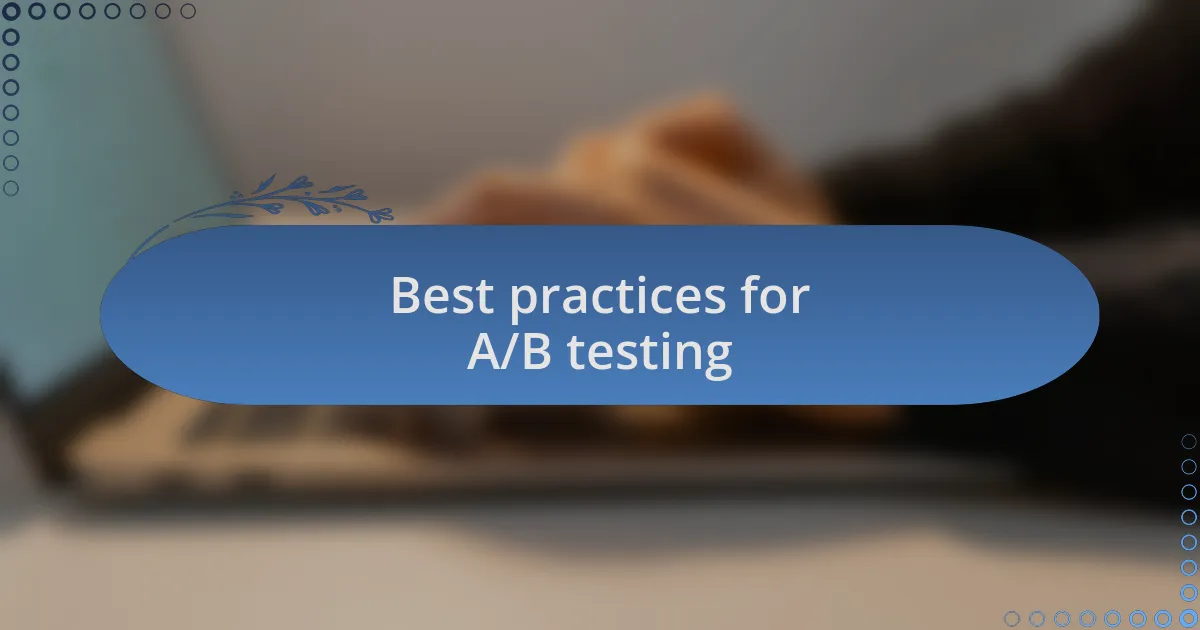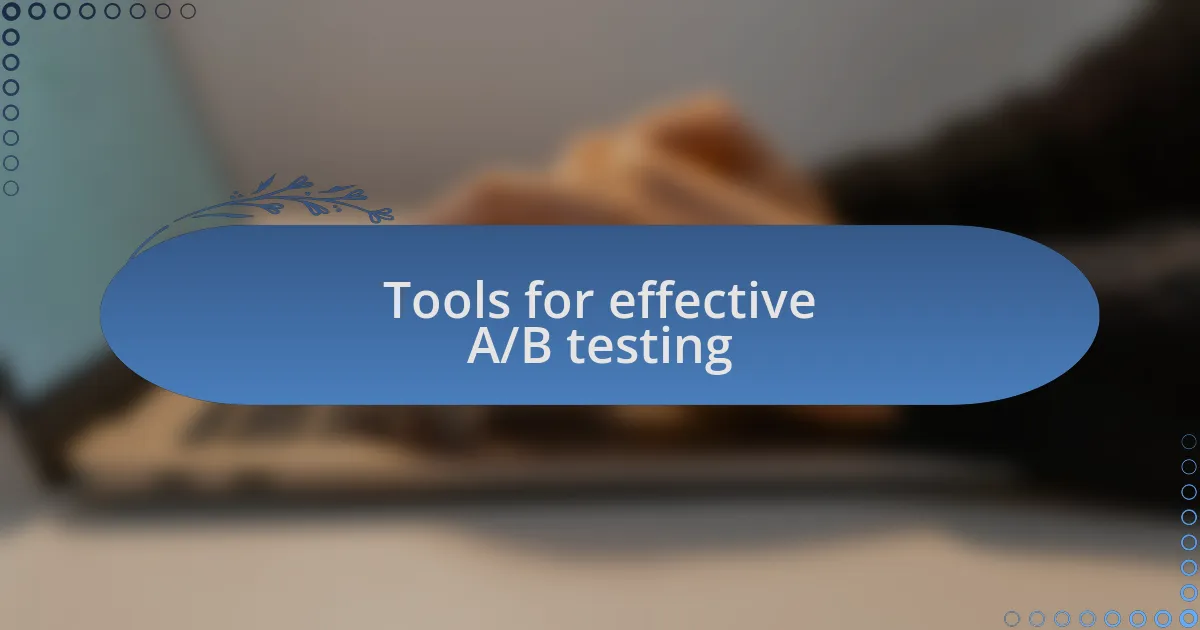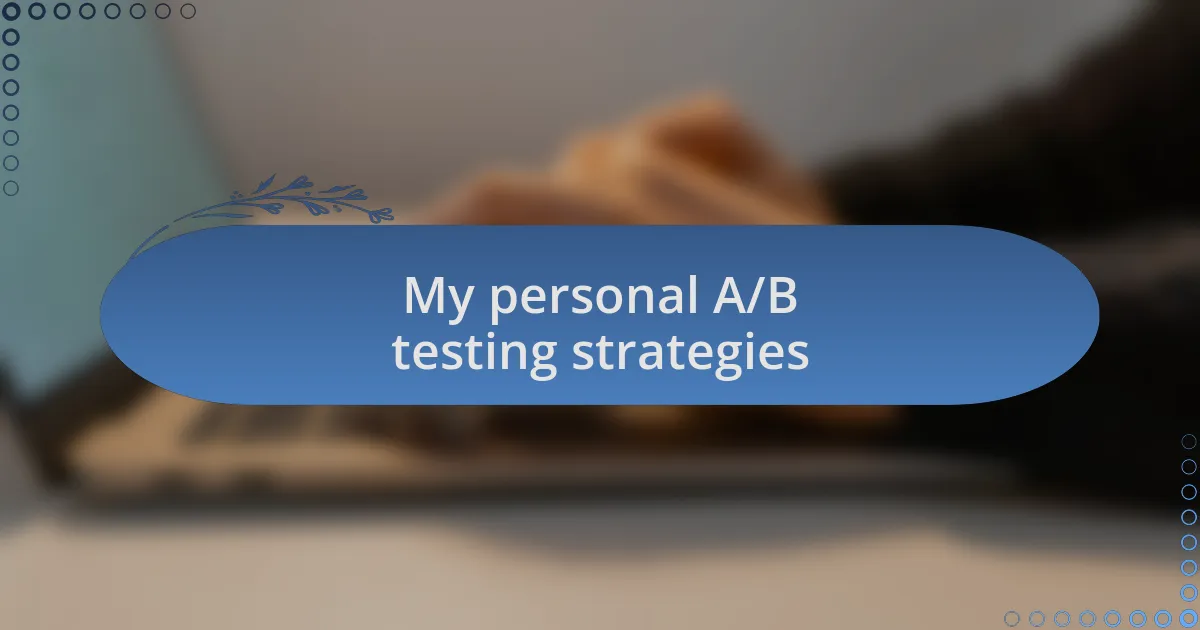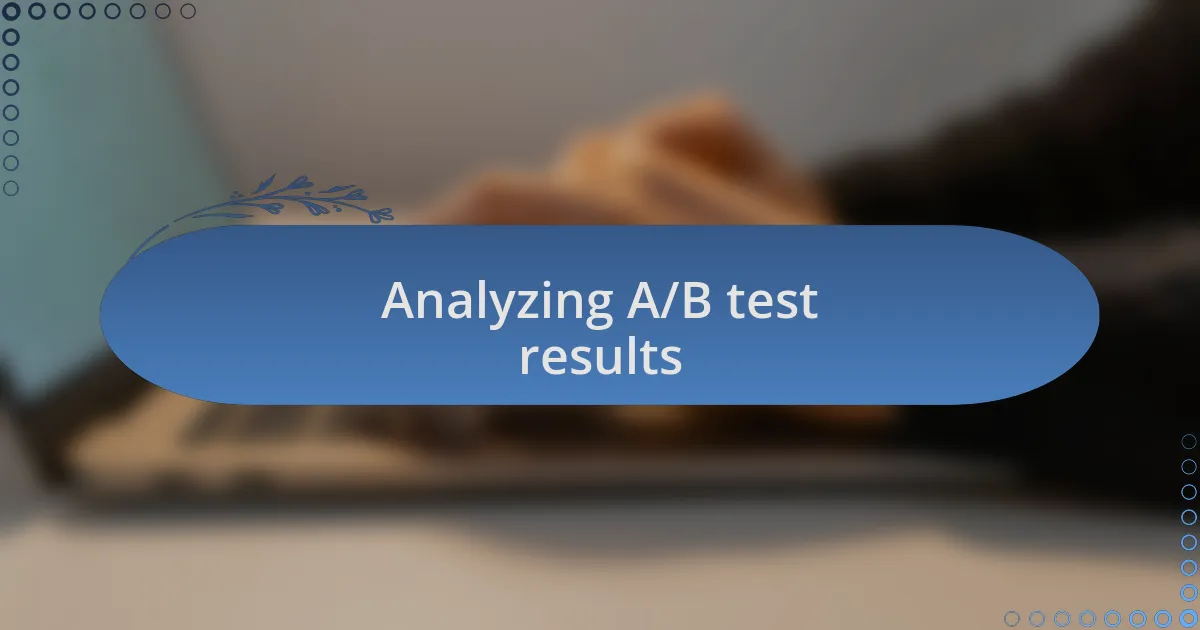Key takeaways:
- A/B testing involves comparing two versions of a webpage or app to find the most effective design, emphasizing the significance of monitoring specific metrics.
- Best practices include isolating one variable, thorough documentation of tests, and considering external factors that might influence results.
- Utilizing user-friendly tools like Google Optimize and Optimizely can enhance the testing process, while heatmap tools like Hotjar provide valuable insights into user behavior.
- Analyzing both quantitative results and qualitative feedback is essential for understanding user behavior, as is revisiting tests to adapt to evolving user expectations.

Understanding A/B testing concepts
A/B testing is all about comparing two versions of a webpage or app to see which performs better. I remember the first time I implemented it on my site; I was amazed at how small changes, like button color or headline wording, could dramatically impact conversion rates. It made me realize that even minor tweaks can lead to significant improvements.
When setting up an A/B test, it’s crucial to identify what you’re measuring—this could be click-through rates, signups, or sales. I once focused solely on signups, only to find out later that the new design affected user engagement in unexpected ways. Have you ever considered how the metrics you select can shape your understanding of the overall user experience?
Another vital aspect is the sample size and duration of the test. I’ve learned that running a test for just a few days can yield misleading results, so I always ensure I gather enough data. Reflecting on my experiences, I’ve come to appreciate that patience is key; it allows for a clearer picture and more informed decisions.

Best practices for A/B testing
When conducting A/B testing, it’s essential to isolate one variable at a time. I remember a time when I excitedly changed both the layout and the call-to-action wording simultaneously. The result was an elusive “better performance,” but I had no idea which change drove the improvement. Have you ever found yourself in a similar situation? Focusing on a single element helps pinpoint what truly affects your results.
Another best practice I’ve adopted is to document every test meticulously. At first, I would jump from one test to another without keeping track of my findings, which led to a cluttered understanding of what worked. By creating a structured log, I can reflect on past experiments, identifying patterns I might have otherwise overlooked. How often do we forget the lessons learned from previous experiments?
Timing your tests can also influence your results significantly. Early in my career, I unleashed an A/B test right before a holiday shopping season, expecting a score of monumental success. To my surprise, my test outcomes were skewed due to the spike in traffic and unique user behaviors during that period. Have you thought about how external factors might distort your test data? Understanding the context behind when to launch your tests can lead to far more reliable insights.

Tools for effective A/B testing
When it comes to tools for effective A/B testing, I’ve found that platforms like Google Optimize are incredibly user-friendly. I once used it to run a test on my website’s homepage, and the intuitive setup allowed me to visualize changes in real time, which was a game changer. Have you tried any tools that made the testing process smoother for you?
Another powerful option I often recommend is Optimizely. This tool offers advanced features like multivariate testing. I remember feeling a sense of relief when I discovered its ability to track user behavior across different segments, allowing for a deeper analysis of test results. If you could see how different audiences respond to variables, wouldn’t that open new doors for your strategy?
Finally, heatmap tools like Hotjar take A/B testing to the next level by providing visual insights into user behavior. The first time I used Hotjar, I was fascinated to see where users clicked and how they navigated my site. It made me wonder—what if you could unlock the hidden paths your visitors take as they interact with your content? By combining these tools, you can create a comprehensive strategy that informs not only your A/B tests but also your overall website design.

My personal A/B testing strategies
I typically start my A/B testing process by identifying specific user pain points on my site. For instance, I once noticed a high bounce rate on a certain page, which sparked my curiosity. By testing different headlines and images, I discovered that a simple change in wording could drastically enhance engagement. Has there been a moment when a minor tweak led to major improvements in your own projects?
In another scenario, I like to leverage small changes before embarking on bigger A/B tests. I remember experimenting with the color of call-to-action buttons. It sounds trivial, but switching from blue to green significantly boosted click-through rates. This experience taught me that even subtle modifications could have a profound impact. Have you ever considered how the color scheme can affect your audience’s actions?
One of my favorite strategies is to run A/B tests simultaneously on different segments of my audience. For example, I once tested content targeting both new visitors and returning users in parallel. The insights I gained were invaluable; it highlighted distinct preferences and behaviors, allowing me to tailor my approach more effectively. When I realized that different segments react so differently, it was a real eye-opener. Have you thought about how segmented testing could reveal new dimensions to your audience’s preferences?

Analyzing A/B test results
When it comes to analyzing A/B test results, I always emphasize the importance of clear metrics. After conducting a recent test on landing pages, I found myself diving deep into conversion rates and user engagement statistics. It was surprising to see how even minor fluctuations could signal significant shifts in user behavior. Have you ever felt overwhelmed by the numbers, only to find that the right metrics told a compelling story?
Beyond just a raw comparison of metrics, I often look for qualitative feedback as well. During one project, I combined the quantitative results with user surveys to uncover the ‘why’ behind the data. The mix of numbers and real user insights helped me see patterns I would have otherwise missed. It led me to realize how important it is not just to track what’s happening but to understand the context behind the changes. Have you considered how qualitative insights could transform your approach to A/B test analysis?
I’ve also learned that revisiting A/B tests after a while can reveal even more insights. In a past project, I decided to re-evaluate some earlier tests months later. What struck me was how user expectations had evolved over time, making some previous winners fall flat. This experience made me wonder: how often do we assume our findings are permanent, rather than testing them against current trends? Always keep a pulse on the changing landscape!